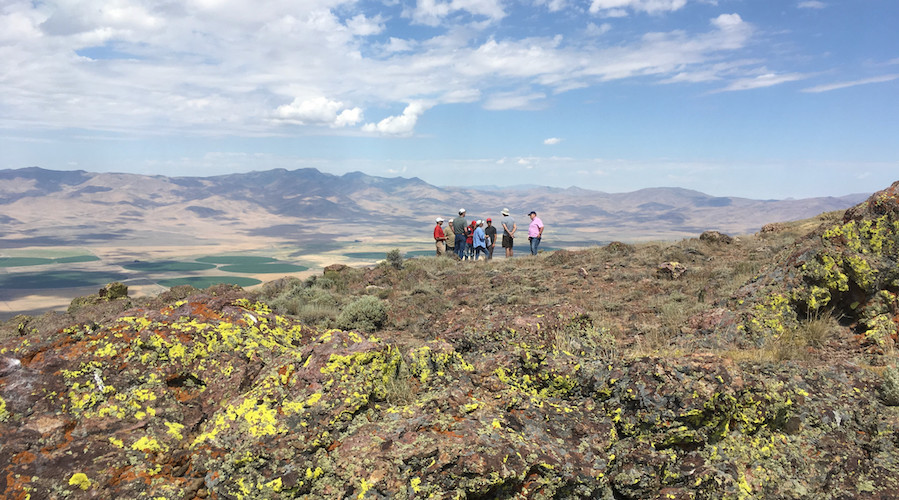It was a daunting moment last Thursday in Colombia, South America’s longest-running democracy, when retired Colonel John Marulanda, ex-president of the Andean country’s powerful Retired Officers Association (ACORE – Spanish initials), threatened to depose (Spanish) Colombia’s President Gustavo Petro. In a statement directed at Petro, Marulanda said they are going to “defenestrate a guy who was a guerrilla." Those comments came a day after hundreds of Colombia’s military veterans protested against Petro in Bogota. Since taking office on August 7, 2022, the relationship between former socialist guerrilla Petro, who is Colombia’s first ever leftwing president, and the public forces, which have experienced substantial resignations, has been particularly strained. Since then, fears have emerged that Colombia’s armed forces, a politically influential body with close ties to former hard-right President Alvaro Uribe, will not accept a former socialist guerrilla as president.
The political intrigues and conflict playing out in Bogota, long a focal point for clashes between the extreme left and right, are being fanned by considerable unease in the upper socioeconomic levels of Colombian society over a one-time leftwing revolutionary holding the office of president. As a young man, Petro joined the socialist M19 guerrilla movement, founded after the disputed and allegedly fraudulent 1970 presidential election. During his time with the M19 Petro was imprisoned and according to him tortured. After the group disbanded as part of the March 1990 peace deal - where Petro was a negotiator - struck with the government of President Virgilio Barco, he held various government appointments. Petro then went on to become a congressional representative in 2002 and a senator in 2006. After two earlier failed attempts to win Colombia’s presidency, in 2010 and 2018, Petro finally succeeded during the 2022 election.
Tensions are further heightened in Colombia because of the impact of the fallout from the 2020 COVID-19 pandemic with the Andean country struggling to recover from spiraling poverty, crime, and violence. By the end of 2021, nearly 40% of Colombians were living in poverty (Spanish) compared to 36% in 2019, while 12% of the population was living in extreme poverty against just under 10% 2 years earlier. Petro’s predecessor President Ivan Duque ignited a tinderbox of simmering community resentment in April 2021 when he announced plans to hike taxes subsequently triggering Colombia-wide violent anti-government protests.
After emerging victorious during the July 2022 presidential run-off, Petro announced his ambitious yet what increasingly appears to be an unachievable plan for total peace. This focuses on obliging the state policy to seek peace with the disparate illegal armed groups engaged in Colombia’s decades-long bloody civil conflict that has claimed 262,000 lives, the vast majority of whom were civilians. It is this low-level asymmetric war which is responsible for much of the violence occurring in the strife-torn country, notably in remote rural regions. As part of that plan, Petro prematurely declared a ceasefire at the start of 2023, but it was not recognized by the numerous illegal armed groups operating in Colombia which continued attacking crucial infrastructure, civilians, and the armed forces. That only heightened tensions with the military and police which have borne much of the brunt of the uptick in violence.
Petro, to the displeasure of the hard-right and many within the armed forces, resumed peace talks with the last remaining leftist guerrillas the National Liberation Army, known by its Spanish initials ELN. His predecessor Duque suspended negotiations (Spanish) with the guerrillas after their January 2019 bombing of a Bogota police academy claimed 21 lives. The ELN, which was founded in 1964, is believed to have as many as 2,500 combatants making it the second largest illegal armed group in Colombia after the Gulf Clan, a neo-paramilitary group that has an estimated 5,000 fighters. The Gulf Clan emerged in 2006 when senior paramilitary leader Vincente Castaño broke away from the demobilization process of the United Self-Defense Forces of Colombia (AUC – Spanish initials) and rearmed a paramilitary group. After clashing with a variety of other illegal armed groups the Gulf Clan emerged as Colombia’s most powerful criminal organization. There are also various bands of combatants from the Revolutionary Armed Forces of Colombia (FARC – Spanish initials) who didn’t accept the 2016 peace accord with Bogota.
There have been frequent scandals and allegations concerning Colombia’s police and army’s involvement in human rights abuses, illegal detention, torture, extrajudicial killings, and rampant corruption over the last two decades. The most severe instances occurred during the 2021 national strike where thousands of Colombians took to the streets to protest against President Duque’s proposed tax hikes, soaring corruption, and economic mismanagement. The crisis of impunity among Colombia’s public forces is so severe that the Inter-American Commission on Human Rights (IACHR – Spanish initials) expressed concerns over endemic police violence in Colombia in 2021. Petro’s desire to secure peace, eliminate corruption, and end the impunity enjoyed by Colombia’s armed forces and police when it comes to human rights abuses saw him appoint controversial prominent anti-corruption investigator Iván Velásquez as Minister of Defense. That further inflamed tensions with Colombia’s armed forces.
This is all occurring at a time when there is considerable rumor and innuendo about a rightwing campaign by various former senior security officials as well as business leaders and supporters of former President Uribe to undermine Petro’s presidency. While Petro has been able to maintain an overall semblance of a functional relationship with Colombia’s Armed Forces despite evident tensions, his relationship with retired members of the military has been strained and antagonistic. Regardless of the issues discussed, Colombia’s active military has, thus far, shown no interest in Marulanda’s comments. Petro ridiculed the statement and warned the Colombian people of the threat writing via Twitter “Why are they conspiring for a coup d’état? Because they are terrified that we will put an end to impunity.” Indeed, the retired colonel later walked back his comments claiming that he was referring to the President of Peru Pedro Castillo, who was ousted from office during the first week of December 2022 to be later arrested and detained.
While a coup certainly appears unlikely with Marulanda’s comments appearing to amount to nothing more than saber rattling, Colombia’s Attorney General’s Office has opened an investigation (Spanish) to determine whether a crime has been committed. They have also inflamed tensions at a crucial time for Petro whose controversial health reforms, aimed at establishing a centralized government-monitored payment system to reduce corruption and improve care, were rejected. After the clashes over his health reform proposals, the president replaced seven ministers in his cabinet who were seen by many as moderates. There are also accusations that retired military members protested to create a distraction from the explosive testimony from paramilitary leader Salvatore Mancuso before the Special Jurisdiction for Peace. That includes claims of close ties between paramilitary forces, the Army, and police as well as their participation in extrajudicial killings.
By Matthew Smith for Oilprice.com












.jpg?ext=.jpg) The platform for extracting uranium for seawater (Image: CNNC)
The platform for extracting uranium for seawater (Image: CNNC).jpg)